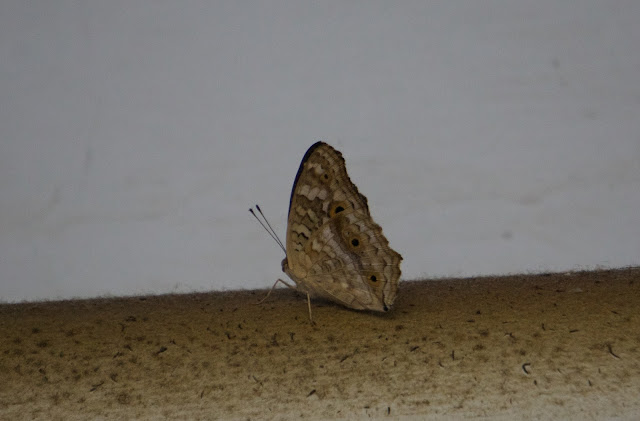Vikas is a young and serious naturalist and MNS member with whom we have travelled on several birding trips across the country. I have never seen anyone with the astonishing speed of capturing record shots like Vikas - if he was in the Wild West he would have been known as Velocious (yes there is a word like that) Vikas! - and this ability of his coupled with his thorough grasp of the bird books, yields some amazing sightings/ rare gaffes and never a dull moment.
I have an easy formula - on any trip my personal bird sightings will be half of his!
Anyway, he has been on the prowl at GNP, and on 26th November spotted a Dollarbird at the Polo ground. This is what he has to say -
This bird is usually seen in the Western Ghats in south India, and it is an unusual and rare sighting for Chennai. I have not seen this bird as yet. I am quite sure given my poor sighting skills and my rotten sense of timing, I would have missed the pretty bird even if I had been around Vikas!
Hope you have a good time in Chennai, Dollarbird, and the weather suits you and you find a mate and a family soon.
I have an easy formula - on any trip my personal bird sightings will be half of his!
Anyway, he has been on the prowl at GNP, and on 26th November spotted a Dollarbird at the Polo ground. This is what he has to say -
"Words can't express my astonishment when I saw this bird sitting on a tree near Doctors Road. We were trying to find orange breasted green pigeons when I spotted this odd bird. When Rama Aunty and I took pictures we were dazzled that the bird was blue and had a prominent red bull and violet throat.
Hence we went closer to the bird and it flew to a new open perch where I could confirm it to be a Dollar Bird!"
 |
| Photo by Vikas - Eurystomus orientalis |
Hope you have a good time in Chennai, Dollarbird, and the weather suits you and you find a mate and a family soon.











































